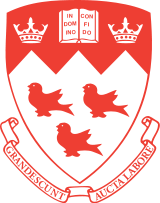Shaun Lovejoy |
introduction
. multifractals
. clouds . topography
. topography perspective . misc
. movies . covers
. glossary .
publications |
|
The main aim of the Multifractal Explorer is to show in a fairly visual manner the possibilities anisotropic universal multifractals especially their geophysical applications. The theory is pretty minimal as is the mathematics. The the introduction, gives the definitions for the parameters, and the multifractals section, which shows how the fields change with the parameters. The remaining sections show some of the areas of applications of multifractals in geophysics, especially clouds, radiation rain, and topography. The site is intended to be viewed in order, but you can jump to the galleries and refer back to the introduction and glossary when necessary. There is a main navigation bar under the title, and sub bars appear within each section. Also, on many pages there are supplemental tables showing relevant mathematical details of the page's contents.
|

